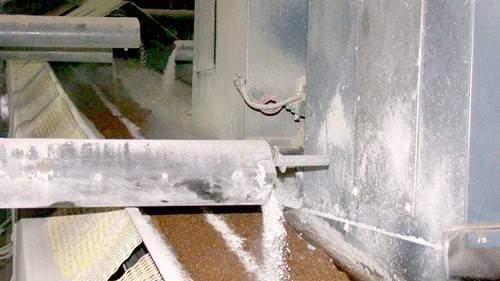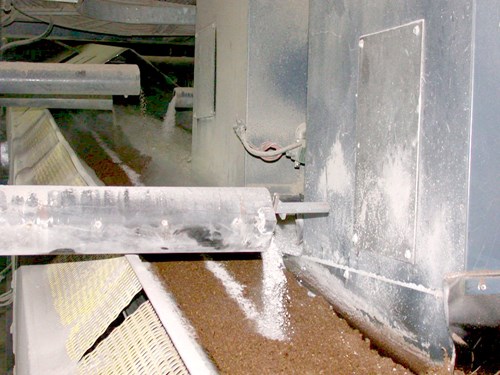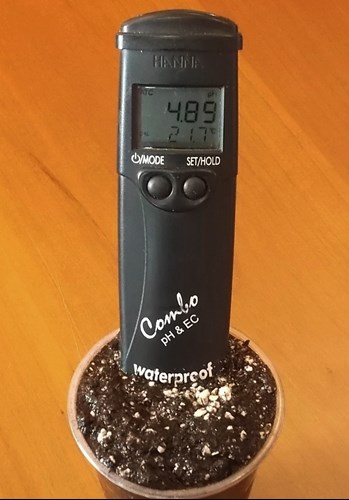Low pH of Fresh Growing Media


The primary components of commercial growing media are sphagnum peat moss and composted pine bark, which are naturally acidic with a pH in the 3.5 to 5.0 range. Other components, such as perlite, vermiculite and coir, are fairly neutral to slightly basic in pH. For most greenhouse crops, the ideal growing medium pH for maximum nutrient availability is between 5.5 and 6.5. To achieve this ideal pH, soil blenders must add limestone. The limestone is applied in a granular form of either dolomitic limestone, calcitic limestone or a combination of the two.
Dolomitic limestone dissolves slowly in the growing medium, resulting in longer-term pH adjustment. Calcitic limestone, on the other hand, dissolves fairly quickly, resulting in faster initial pH adjustment, but it does not last as long as dolomitic limestone. Both types of limestone need moisture and a minimum amount of time to dissolve, and have an impact on the growing medium pH. As a general rule, it takes approximately seven days after the growing medium is watered in during planting before the limestone is activated and the pH stabilizes, reaching the intended pH.

What this means to the grower is that the “true” growing medium pH will not be evident until approximately seven days after the crop has been planted. Testing the pH of fresh, unused growing media often results in a pH reading much lower than the desired level. How much lower depends on how fresh the unused growing medium is and the testing method used.
Growing media are packaged with relatively low moisture, so the limestone does not activate for some time; therefore, freshly packaged growing media may have a pH of 4.5-4.9 (saturated media extract test method or S.M.E.). Over time, the limited moisture within the package of an unused growing medium slowly dissolves the limestone, resulting in an older, unused growing medium having a higher pH than when it was first manufactured. This change in the pH will occur a little faster if the moisture content of the growing medium is higher. Typically the pH of an unused PRO-MIX product that is 4-9 months old is 5.2-5.8 (S.M.E. method), depending on the product and the moisture content. A growing medium should be used within nine to twelve months of its manufacturing date to ensure that the pH of the unused growing medium is not too high. However, the starter fertilizer charge and wetting agent degrade over time, which often dictates the best time to use the growing medium.

Using the pour-through method to test the pH of the growing medium will often result in a low pH that is equal to the untreated peat moss and composted bark components in the mix because water runs through the unused growing medium without dissolving the limestone. Using a 2:1 water-to-medium ratio or the S.M.E. method where the pH is measured after a full hour or more of saturation will give a closer indication of the true pH. However, it may still be below the expected level. To know the true measure of the pH of a fresh, unused growing medium, it is best to take a sample, saturate it with distilled water for one week and then use one of the above test methods to check the pH.
As always, to manage plant nutrition, growers should regularly test their growing medium pH and electrical conductivity (EC) levels. By monitoring the pH and EC of a growing medium, growers can quickly react to any changes that will influence the availability of nutrients to the crop.